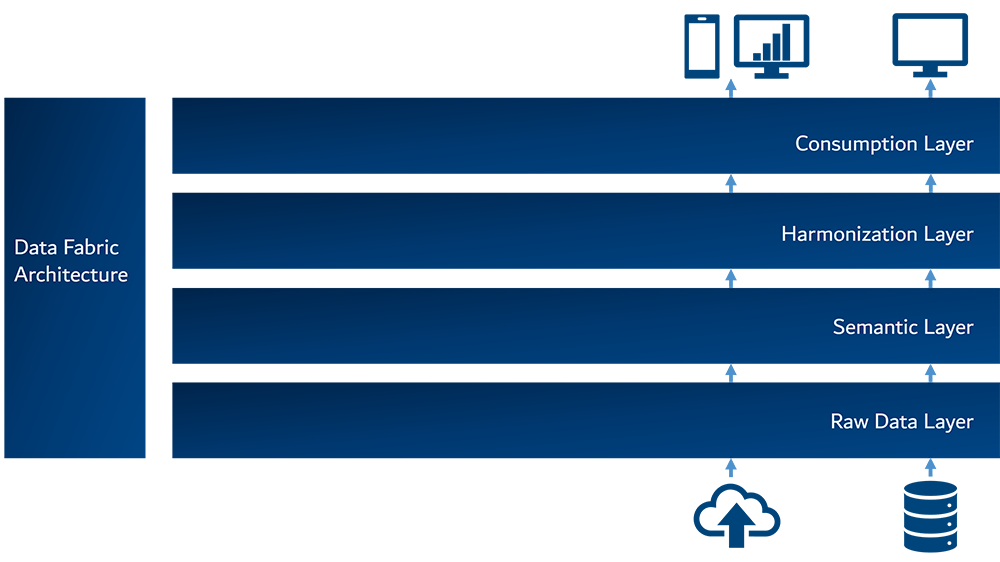Data Fabric: A Key Architecture for Modern Data Strategies
Data Fabric is a modern data architecture that helps companies efficiently manage complex data landscapes – across cloud, on-premises environments, and system boundaries.
What is Data Fabric?
In an increasingly data-driven business world, companies are under growing pressure to manage their data efficiently, securely, and with agility. The Data Fabric architecture stands out as a forward-looking approach to future-proofing data management, integration, and governance.
Why is Data Fabric Important for Businesses?
Data Fabric offers a solution for managing today’s fragmented and complex data landscapes. These diverse data sources only generate business value when brought together meaningfully. The Data Fabric architecture makes data from different sources – both on-prem and in the cloud – available in real time and delivers it as contextualized “data products.”
Beyond data access, the focus lies on intelligent and automated data management. Through metadata management and DataOps concepts, it enables dynamic data orchestration across system boundaries.
How Does Data Fabric Work?
Traditional (“old world”) data management often relies on heavily replicated data in a business warehouse and performs key figure calculations and logic in the frontend. Legacy data warehouses also suffer from issues like unclear data distribution, versioning challenges, and lack of compatibility with historical data.
The new world of Data Fabric resolves these challenges through its “fabric layers”:
- In a raw data layer, data is centrally replicated.
- In a semantic layer, data is enriched—for example, with clear versioning, data governance, and compliance elements.
- In a harmonization layer, data is unified across systems. This layer is especially critical for enabling AI and machine learning use cases.
- Finally, the consumption layer allows business units to access only the data relevant to them.
Thanks to these modular “fabric layers,” the data architecture remains extensible and does not need to be rebuilt repeatedly.
![[Translate to Englisch:] Data Fabric: Zukunft des Datenmanagements](/fileadmin/_processed_/9/e/csm_data-fabric-architektur-headerbild_3679566d4a.png)
